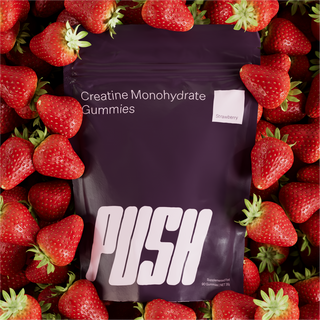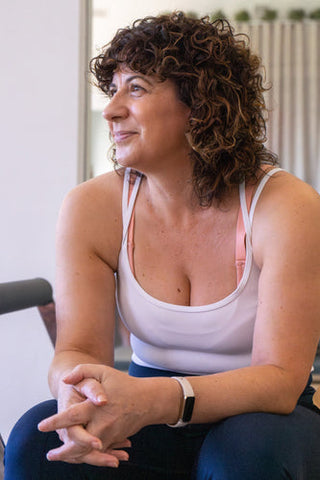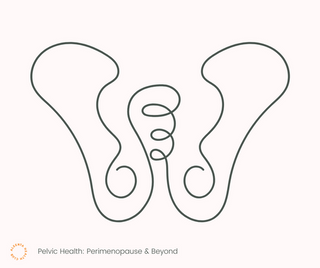Barre and Pilates are both well-known for working your booty. Strengthening and toning these muscles is super important for, well… everything! The glute muscles are what help us walk, run, sit down, stand up and more. Have you ever ended up with a sore back after sitting at a desk all day or going for a long drive? Well, you may be surprised to learn that your back isn’t what’s causing the pain; it’s actually your glutes. While the glutes help us into a sitting position, once seated they aren’t activated, which restricts blood flow and ultimately weakens these muscles. Hence, gentle strengthening exercises such as bridge lifts and donkey kicks, as well as taking regular walks, will help curb back pain and maintain your overall fitness. However, we’re not just talking strength today… it’s also important you give your body the aftercare it needs. Try any of these 5 stretches after a booty-burning sesh to help relieve any lingering muscle fatigue.
But first: understanding your glutes!
It is important to know what you are stretching so you know where you should be feeling it. If you aren’t familiar with these muscles, you may not know that the glutes are actually made up of three muscles, not one. This muscle group consists of the gluteus maximus, gluteus medius and gluteus minimus. Most common glute stretches will be felt in the base (think where the top of the thigh connects) and side of your booty.

1. Double pigeon pose
You may be wondering why we’re starting with double pigeon as opposed to its better-known relative, pigeon pose (don’t worry, this one’s up next!). Well, the great thing about double pigeon pose is that it is super accessible for all bodies, ages and abilities. Some glute stretches can be tricky as not everyone has the range of motion in their hips to maneuver themselves into a pretzel. Double pigeon pose is a great alternative: for those who can’t stack one leg on the other, you can simply sit in a cross-legged position instead, and still feel the stretch. The farther you lean the body forward, the more intense the stretch gets, making it easily adjustable to you and your body.

2. Pigeon Pose
If you have the time, pigeon pose is a fantastic, held stretch that gets deep into those glute muscles. While it can also be a quick 30-second hold, it works best when staying in the pose for a few minutes. We recommend bringing the body forward over the front leg to deepen the stretch – try using some yoga blocks to rest on or stack your fists and place your head on top. If you can’t manage this, don’t stress, the stretch will still work for you and overtime you will find you can go deeper and deeper.

For those needing further modification, bend the back leg as well.

3. Figure 4 (back-laying or seated)
When you’ve had a tough class and getting off the floor is the last thing you want to do, figure 4 is perfect for you! Known in yoga as ‘thread the needle’ pose, all you need to do is bring the knees toward your chest and cross one leg over the other. Try and aim to have your ankle resting on the opposite thigh, creating the number 4 with your legs. You can hold the supporting thigh or knee, and draw the legs closer to your chest for a deeper stretch if needed. Be sure to keep the supporting leg at a 90-degree angle; don’t drop your foot to your bum! For those wanting an even more intense stretch, as you pull the legs in, push the working knee away from your body at the same time.

This stretch can also be done seated with the supporting foot resting on the floor as well as the sitz bones.

4. Back-laying TFL
Did you know your booty is made up of more than just the glute muscles? There is also a small muscle called the tensor fascia lata, or TFL for short (you can find it in the diagram above). It runs sideways from your hip to the top of your IT band (part of your quad). This muscle helps with rotation (referred to as turn out in your classes!), so can definitely get sore after a barre sesh. This stretch is a great add-on to the figure 4, as all you need to do is let your legs fall to one side. Your hips can come up as far as they need, so don’t worry if they lift up as you roll over. Once you reach your full range of motion, the aim is to let your hips relax. Oh, and you can let your arms go too! The closer your opposing hip gets to the floor without rolling back, the more intense the stretch will feel. Now, this stretch doesn’t take a lot to get going, but for those needing a little extra, try wiggling the supporting knee up to a 90-degree angle.

5. Standing TFL
If the back-laying TFL stretch is not accessible for you, try this alternative. You’ll need a barre or something sturdy to hold on to, like a kitchen bench. Stand side on to the barre and cross your outside foot over your inside foot. Holding the barre, pull your hips away whilst simultaneously reaching your free arm up and over toward the barre. You should end up in a shape similar to a banana. To intensify this stretch, think about pushing into the floor with the outside foot. Lastly, watch out for any twisting with this one! You want your hips to stay perpendicular to the barre.

Loved these stretches? Let us know! Tag us on Instagram @aleentabarre
Works Cited
Karunaharamoorthy, Achudhan. Tensor fasciae latae muscle. 28 February 2022. 15 June 2022. <https://www.kenhub.com/en/library/anatomy/tensor-fasciae-latae-muscle>.
Moses, Michael. Strengthen the Glutes to Prevent Low Back Pain. 7 March 2017. 24 June 2022.
<https://arlingtonpainandrehab.com/strengthen-glutes-prevent-low-back-pain/>.





